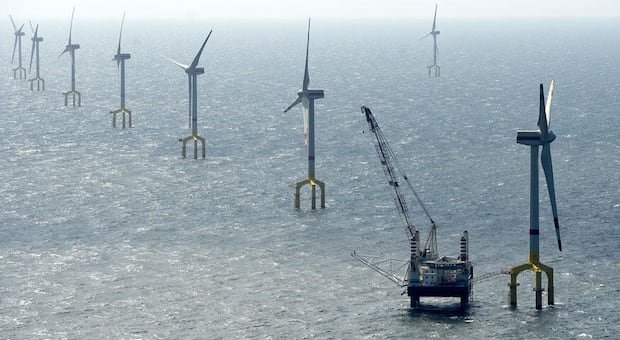Premier Tim Houston advocated for a significant expansion of offshore wind energy in front of an enthusiastic audience on Wednesday. However, a cautionary tale about Germany’s slow progress in the sector provided a reality check during the event.
Speaking at an offshore wind forum organized by Net Zero Atlantic in Halifax, Houston emphasized the untapped potential of offshore wind resources. He presented his “Wind West” project as a way to deliver clean energy to various regions in North America while boosting Nova Scotia’s economy, especially in light of the province’s recent budget deficit exceeding $1.2 billion.
Before Houston’s address, Philipp Tremer from the German Offshore Wind Energy Foundation highlighted Germany’s lengthy journey of 23 years to start generating electricity from offshore wind turbines. He mentioned the challenges and setbacks faced by Germany, including a recent failed auction for new licenses, urging a reevaluation of regulatory frameworks and growth expectations.
Germany currently has approximately nine gigawatts of installed offshore wind capacity and aims to reach 30 gigawatts by 2030. In comparison, Houston aims for five gigawatts by 2033 and 15 gigawatts by 2040, with Nova Scotia’s current peak energy demand at around 2.4 gigawatts.
Tremer cautioned against moving too quickly, emphasizing the importance of a thorough ramp-up period of around 10 years. He stressed the need for community engagement, environmental impact assessments, and early public involvement to avoid project delays caused by legal challenges.
Highlighting the financial aspect, Tremer noted that Germany heavily subsidized its initial projects and did not see government revenues for 13 years, suggesting that subsidies are crucial for industry establishment. Houston proposed a mix of government investment and private sector involvement, including a four percent royalty on production.
Houston’s vision for offshore wind development aligns with his strategy to drive economic growth and sustainability in Nova Scotia, setting the stage for a potential shift towards renewable energy sources in the region.

